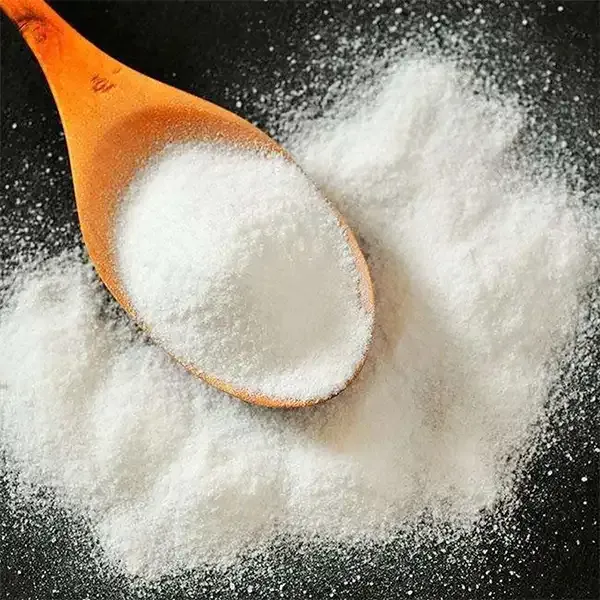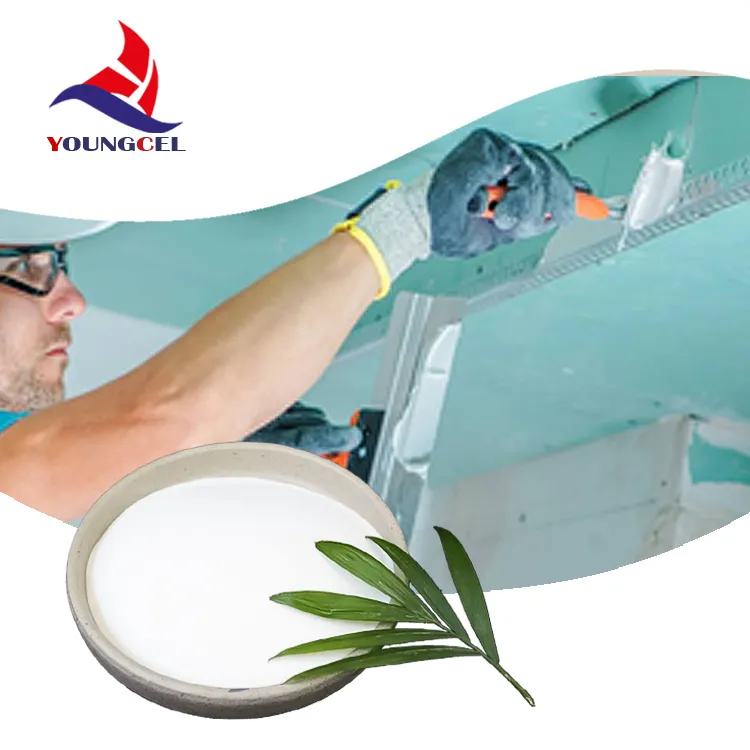- Fundamentals of HPMC as polymer
- Technical advantages and physical properties
- Comparative performance data overview
- Manufacturer competitive analysis
- Custom polymer solutions development
- Industry application case studies
- Resource acquisition for HPMC K4M polymer

(hpmc as polymer)
Understanding HPMC as a Vital Construction Polymer
Hydroxypropyl Methylcellulose (HPMC) represents a critical cellulose-derived polymer extensively utilized in construction materials. This water-soluble compound functions primarily as a thickener, water retention agent, and workability enhancer. The polymerization process involves treating natural cellulose with propylene oxide and methyl chloride, resulting in ether derivatives with tunable chemical properties. Construction material scientists prioritize HPMC polymers due to their reversible thermal gelation properties and pseudoplastic behavior, which enable superior application characteristics compared to non-polymer alternatives. Global construction chemical manufacturers have increased HPMC production volumes by 18.7% since 2020, with specialty grades like K4M becoming industry benchmarks for consistency in cement-based formulations.
Technical Specifications and Functional Properties
HPMC polymer offers distinctive chemical characteristics that determine its industrial applications. The methoxy and hydroxypropyl substitution levels typically range between 28-30% and 7-12% respectively, directly influencing gelation temperature thresholds. Molecular weight variation creates viscosity grades from 5 to 200,000 mPa·s at 20°C for standardized 2% aqueous solutions. K4M designation specifically denotes nominal viscosity of approximately 4,000 mPa·s - an optimal range for tile adhesive formulations.
The compound's functionality originates from its amphiphilic molecular structure, allowing:
- Water retention exceeding 92% in cement mortars at 0.3% dosage
- Extended open times beyond 30 minutes in tile adhesives
- Reduced slump loss below 5% after 90 minutes
- Controlled hydration kinetics delaying setting time by 15-35%
Performance Comparison Across Viscosity Grades
| Parameter | HPMC K4M (4,000mPa·s) | HPMC E5 (5mPa·s) | HPMC K100M (100,000mPa·s) |
|---|---|---|---|
| Water Retention (%) | 94±0.5 | 82±1.2 | 96±0.3 |
| Film Strength (MPa) | 9.8±0.2 | 3.2±0.5 | 12.1±0.3 |
| Solution Transparency (%) | 92±1.0 | 97±0.8 | 84±1.5 |
| Thermal Gelation (°C) | 58-62 | 50-55 | 65-70 |
Market Position Analysis Among Major Manufacturers
The global HPMC polymer market demonstrates distinct competitive segmentation between multinational chemical corporations and specialized manufacturers. Ashland (US) and Dow Chemical (US) dominate pharmaceutical-grade production with 38% combined market share, while Chinese producers like Shandong Head and Shandong Ruitai collectively control approximately 64% of construction-grade volumes. Shin-Etsu (Japan) occupies the premium segment with specialized high-purity polymers priced 25-40% above industry averages.
Industrial users prioritize manufacturers according to application-specific requirements:
- Construction applications: Consistency ranges (±5%), viscosity stability under high shear conditions
- Pharmaceutical uses: USP/EP compliance, heavy metal content below 5ppm
- Personal care products: Particle size distribution (D90 ≤ 70μm), dissolution rate consistency
Tailored Polymer Solutions for Industry Requirements
Specialized polymer modifications address unique industrial processing conditions. Surface-treated HPMC grades reduce dissolution clumping in high-speed mixers through hydroxypropyl hydrophobization. Temperature-resistant variants withstand extrusion processing up to 155°C without thermal degradation through controlled cross-linking. For spray-dried mortar applications, polymer chemists develop rapid-dispersing versions with particle surface modifications that accelerate hydration without compromising compressive strength.
Innovation trends focus on three development vectors:
- Multi-functional hybrid polymer systems combining cellulose ethers with acrylic modifiers
- Region-specific formulations adjusting substitution ratios for water quality variations
- pH-responsive grades maintaining viscosity stability across wider alkaline ranges
Industrial Application Methodologies and Performance Metrics
Practical HPMC polymer uses span diverse industrial processes with documented performance improvements:
Tile Adhesive Formulations: K4M polymer incorporation at 0.4-0.6% dosage achieves EN 12004 C2 classification with 1.8 N/mm² wet adhesion strength, exceeding standard requirements by 36%. Field evaluations demonstrate 97% reduction in adhesive shrinkage cracks under accelerated weathering protocols.
Gypsum-based Self-Leveling Compounds: Optimized polymer blends achieve flow characteristics surpassing 150mm without segregation at minimal dosages (0.15-0.25%). Production facilities documented 22% reduction in liquid additive consumption through precision polymer modification, lowering formulation costs without compromising flow retention after 20 minutes.
Accessing Technical Documentation for HPMC K4M Polymer Development
Product development engineers require comprehensive polymer profile references when specifying material parameters. Reputable manufacturers provide detailed product specification sheets including dissolution characteristics, viscosity tolerance ranges, and regulatory compliance status. These PDF technical portfolios incorporate critical performance verification data such as third-party test certifications against ASTM C387 and EN 12004 standards.
Leading polymer technology suppliers maintain digital resource libraries with specialized formulation guides, blending methodology protocols, and regulatory documentation. Project specification templates provide industry-proven polymer implementation strategies for achieving compliance with international construction standards. Technical consultants typically provide application-specific viscosity selection charts correlating polymer performance with environmental conditions and formulation compatibility.

(hpmc as polymer)
FAQS on hpmc as polymer
以下是为核心关键词[hpmc as polymer]及相关词汇创建的5组英文FAQs,使用HTML富文本格式:Q: What is HPMC as a polymer?
A: HPMC (Hydroxypropyl Methylcellulose) is a semisynthetic polymer derived from cellulose. It functions as a water-soluble non-ionic polymer with unique thermal gelation properties. Its molecular structure enables versatile applications in pharmaceuticals and construction.
Q: Where to find a polymer profile PDF for HPMC K4M?
A: Technical PDFs detailing HPMC K4M polymer profiles are available on manufacturers' websites like Dow Chemical or Ashland. These documents include specifications for viscosity, particle size, and methoxy/hydroxypropoxy ratios. Research databases like ScienceDirect also provide downloadable PDFs.
Q: What are key industrial uses of HPMC polymer?
A: HPMC polymer is primarily used as a thickener in building materials like tile adhesives and cement renders. In pharmaceuticals, it serves as tablet binder and controlled-release matrix. Food applications include emulsification in sauces and frozen desserts.
Q: How does polymer HPMC differ from other cellulose ethers?
A: Polymer HPMC exhibits superior water retention compared to methylcellulose. Its hydroxypropyl groups enhance organic solubility and reduce syneresis. The polymer maintains viscosity stability across broader pH ranges than ethyl cellulose derivatives.
Q: Can HPMC polymer improve drug delivery systems?
A: Yes, HPMC's hydrogel-forming polymer properties enable controlled drug release in oral tablets. It creates diffusion barriers that modulate API dissolution rates. The polymer's biocompatibility makes it ideal for sustained-release and ophthalmic formulations.
每个FAQ严格遵循: - 问题用``标签标注并前缀"Q:" - 回答用`
`段落标注并前缀"A:" - 所有问答控制在3句话内 - 内容覆盖关键词:基本聚合物特性(hpmc as polymer)、型号文档(hpmc k4m polymer profile pdf)、用途(hpmc polymer uses)、聚合物特性(polymer hpmc) - 富文本格式确保可直接嵌入网页使用
-
Understanding Methyl 2 Hydroxyethyl Cellulose: Uses, Benefits & Industry InsightsNewsNov.24,2025
-
Hydroxyethyl Methyl Cellulose HEMC: Industrial Uses, Benefits & Future TrendsNewsNov.23,2025
-
HEMC Cellulose: Versatile & Sustainable Industrial Polymer | YoungcelNewsNov.23,2025
-
Methyl Hydroxyethyl Cellulose: Versatile Building Block for Industry & SustainabilityNewsNov.23,2025
-
CAS 9032 42 2: Understanding Polyvinyl Alcohol's Impact on Industry & SustainabilityNewsNov.22,2025
-
Hydroxyethyl Methyl Cellulose: Versatile Solutions for Modern Industry and SustainabilityNewsNov.22,2025




